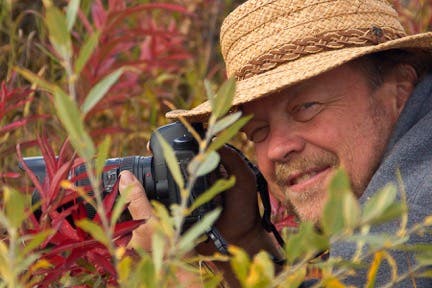"One On One" with Ralph Lee Hopkins


Ralph Lee Hopkins Director of Lindblad Expedition Photography and National Geographic photographer has submitted his one on one interview, with some stunning images that he had taken during one of Lindblad Expeditions Cruises.
Please introduce yourself?
My name is Ralph Lee Hopkins, and I’m a National Geographic photographer and Director of Expedition Photography for Lindblad Expeditions.
What defines your photography style?
While personally I don’t identify myself as having a particular style, my editors expect crisp, colorful images that have impact. So I guess I’m known for a strong sense of place and images that capture the decisive moment.




How did you become interested in photography?
This is an easy one, my interest in photography peaked when I first saw the red rock canyons of Utah more than 30 years ago.
Do you have any formal training?
Since I didn’t set out in life to be a photographer, I have no formal training. In fact, even though I teach workshops and lead expeditions all over the world, I’ve never taken a photography class or workshop myself.
What do you think were some of the key elements to the development of your photography?
As a self-taught photographer, it was my early experience shooting with a large-format 4X5 camera that help me learn how to the see the world as a photographer. Working on a tripod and shooting with sheet film, one frame at a time, taught me patience. And working with swings and tilts using a view camera taught me how to make careful compositions that have impact.
What type of lighting do you use most within your photography?
As a nature photographer I’m all about working with natural light. While there are some specific situations where I might use a flash as fill light, mostly I’m out in the wilds working with Earth’s closest star, the sun, as my main light source.




How has social media helped with the success of your photography business?
Actually, the digital revolution has had an overall negative impact on my business. The world is now flooded with images, which has devalued images made by professionals. Billions of images are posted freely online every day, many by professionals.
How important is post-processing to your work?
In digital photography it’s necessary to process each and every image before publication. I shoot in RAW format, which makes processing required for every image. Luckily, with the advent of Lightroom, processing has become very powerful and much more efficient.
What’s on your gear buying list for 2015?
Very timely question, as I just ordered a new 27” iMac with the 5K screen, and I’m already looking ahead to 2016 when Canon will release updated DSLR camera bodies.
What awards have you won?
With my ambitious travel schedule, I don’t take the time to enter my images into awards competitions. However, in the past my images have been highly honored by Nature’s Best and BBC wildlife awards.


Any big plans for the future?
My future goals involve continued work in contributing my images for conservation issues where they can make a difference. I’m also getting more involved in being a mentor for the next generation of photographers.
Any advice for novice photographers?
My advice for novice photographers is to find your true passion in photography and pursue it with tenacity. Too many young photographers are all over the map with what they shoot, so it’s important to find your passion, develop a specialty and body of work, and be persistent in getting your work out there.
Next Post
Ted's - Hands On Review Of The Canon Powershot G5X & G9X
Previous Post
5 Photographers Who Helped Me To See
